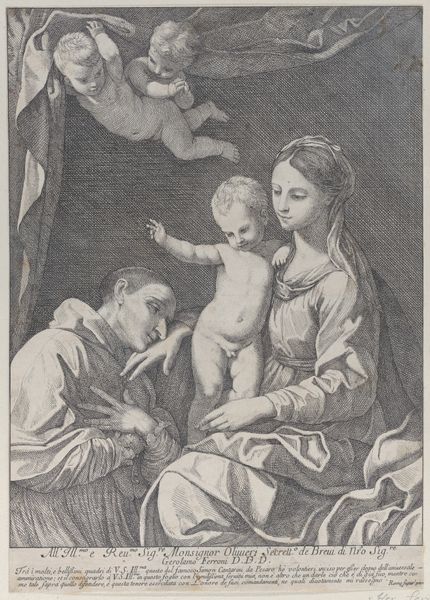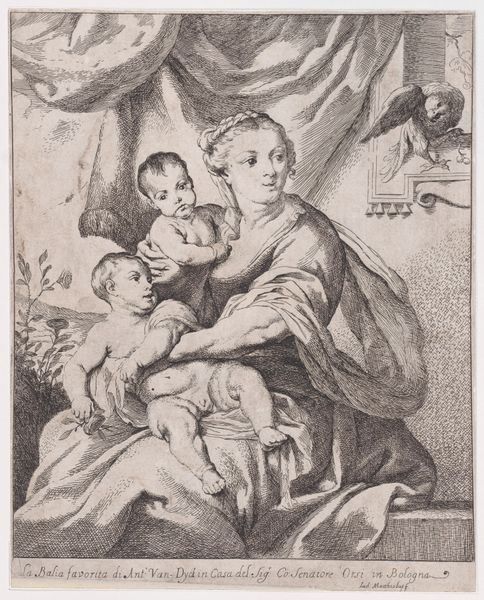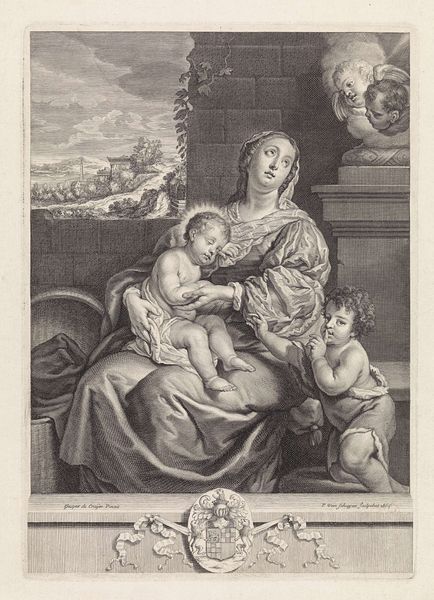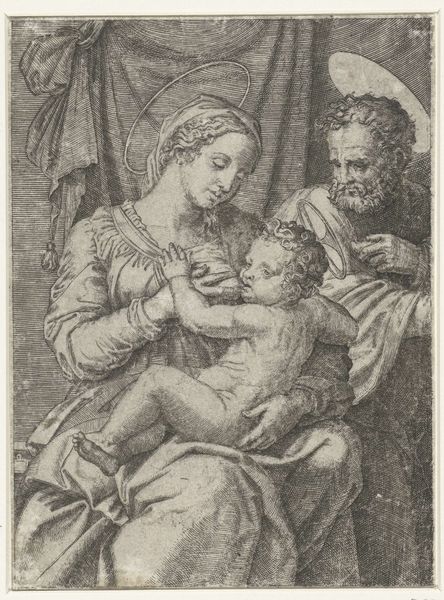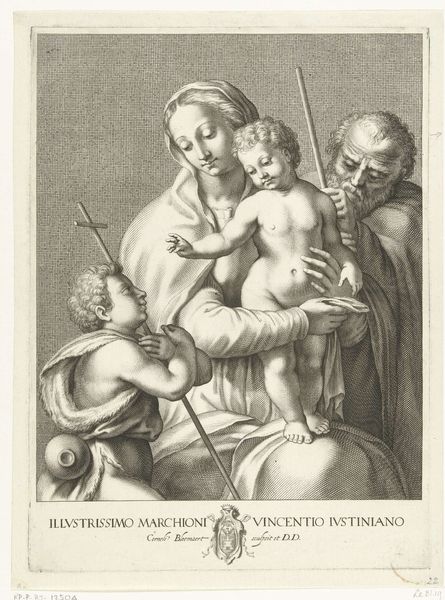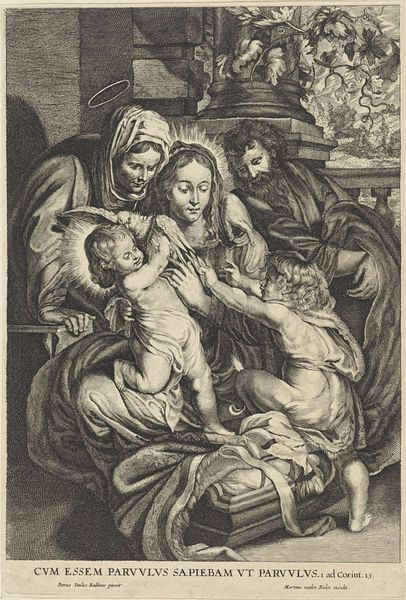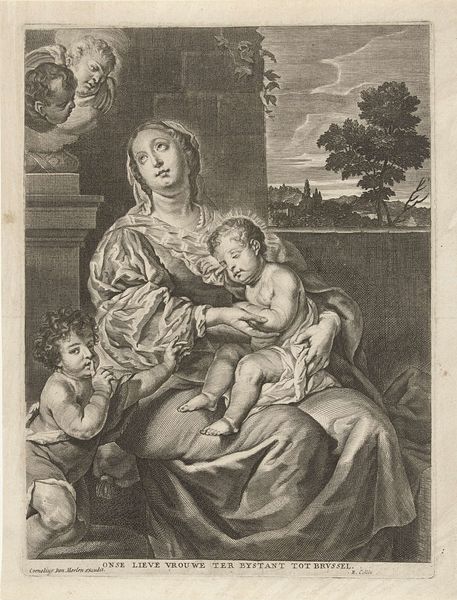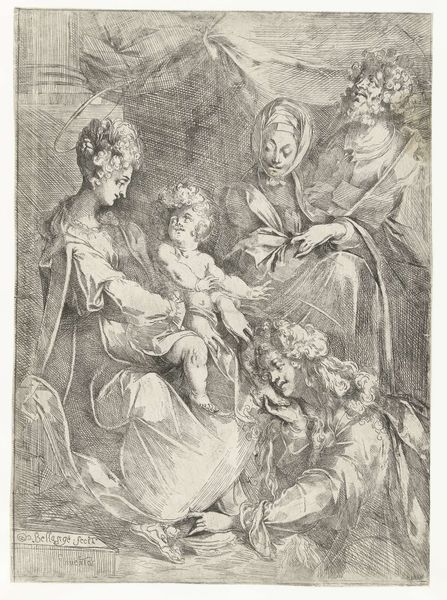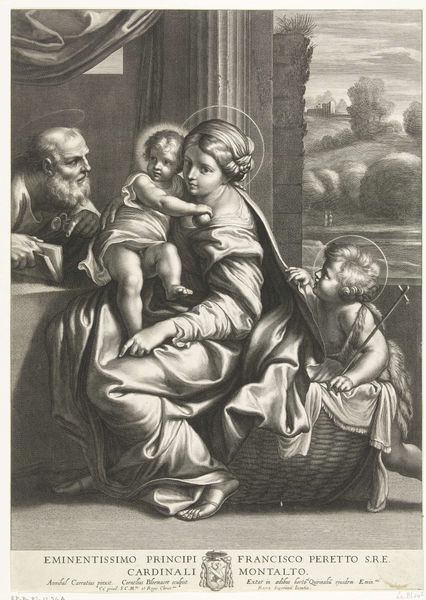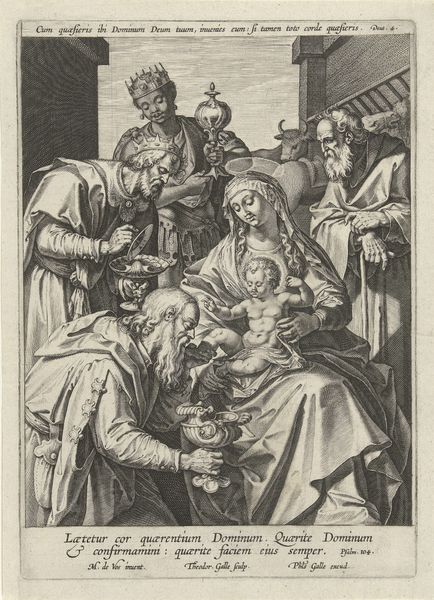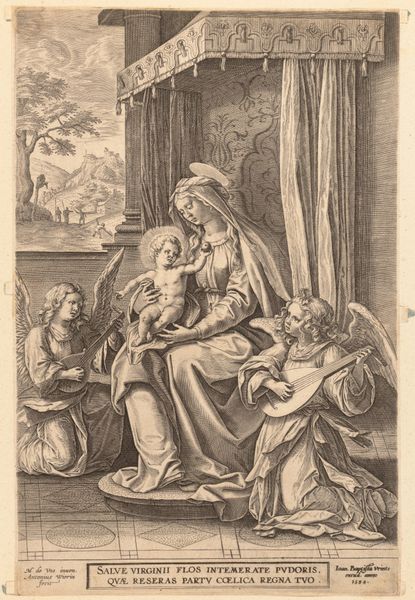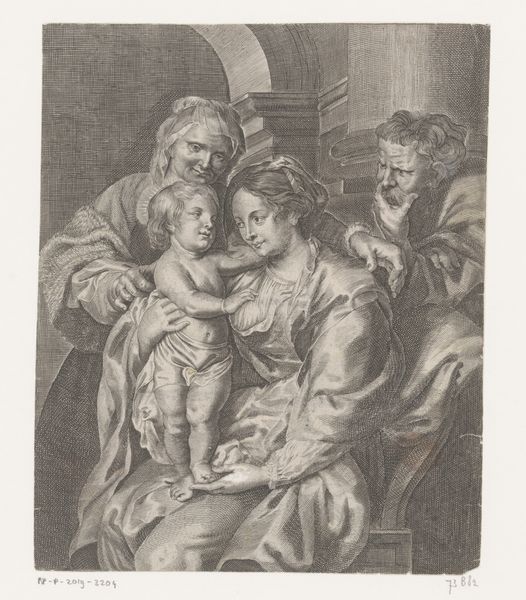
Maria met Kind en de H. Bernardus van Siena en H. Gerardus 1612 - 1633
0:00
0:00
print, engraving
#
portrait
#
pencil drawn
#
baroque
# print
#
old engraving style
#
figuration
#
line
#
portrait drawing
#
history-painting
#
engraving
Dimensions: height 264 mm, width 162 mm
Copyright: Rijks Museum: Open Domain
Curator: This engraving, "Maria met Kind en de H. Bernardus van Siena en H. Gerardus," made sometime between 1612 and 1633 by Cornelis Galle I, presents a really intriguing tableau. Editor: It’s stunning! The fine lines create such detail. What strikes me is the contrasting expressions. Mary looks down so tenderly at the child while the others appear much more austere. What do you see in this piece? Curator: Beyond the immediate religious iconography, it prompts questions about the power dynamics within the Church and the idealization of motherhood. How does this depiction reinforce or challenge existing social hierarchies of the period? The engraving immortalizes particular figures of reverence, imbuing them with symbolic power and suggesting to viewers to what, and to whom, honor is due. Notice anything interesting about the positioning of the figures? Editor: Well, Mary is central, quite literally elevated and visually dominant. She and the Christ Child are very clearly the focus. The Saints appear on the periphery. Curator: Exactly! That placement reflects the immense influence of the Madonna as both an object of religious and secular veneration during the 17th century. And the male saints offering her gifts speaks to a societal emphasis on maternal roles as sacred. Can we extract something problematic in those roles? Editor: I see what you mean. By focusing solely on her maternal role, it subtly limits her identity. I guess that’s part of the dialogue between art history and contemporary feminist perspectives. Curator: Precisely! We examine art through different lenses to reveal those entrenched power structures and question whose stories get told, and how. Editor: It is fascinating to consider how historical art like this continues to spark important conversations today. I'm viewing it so differently now! Curator: That is exactly the power of art, and its criticism. To offer fresh perspectives to navigate the complexities of identity, representation, and cultural values across time.
Comments
No comments
Be the first to comment and join the conversation on the ultimate creative platform.
